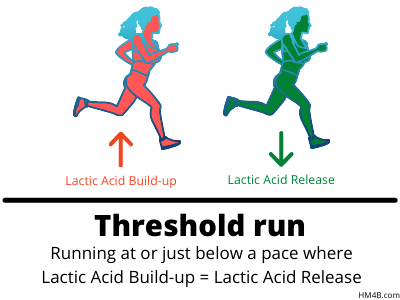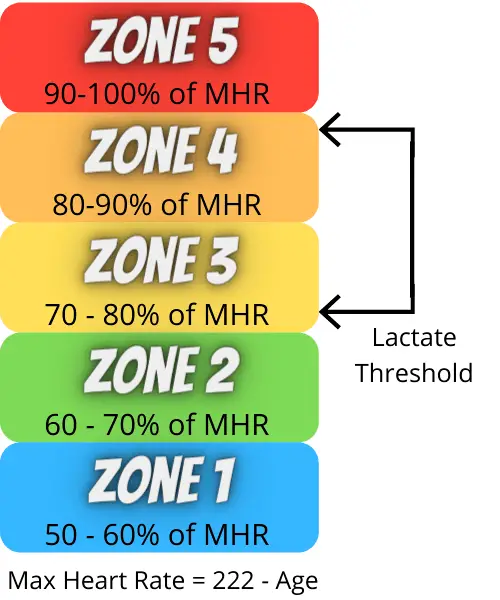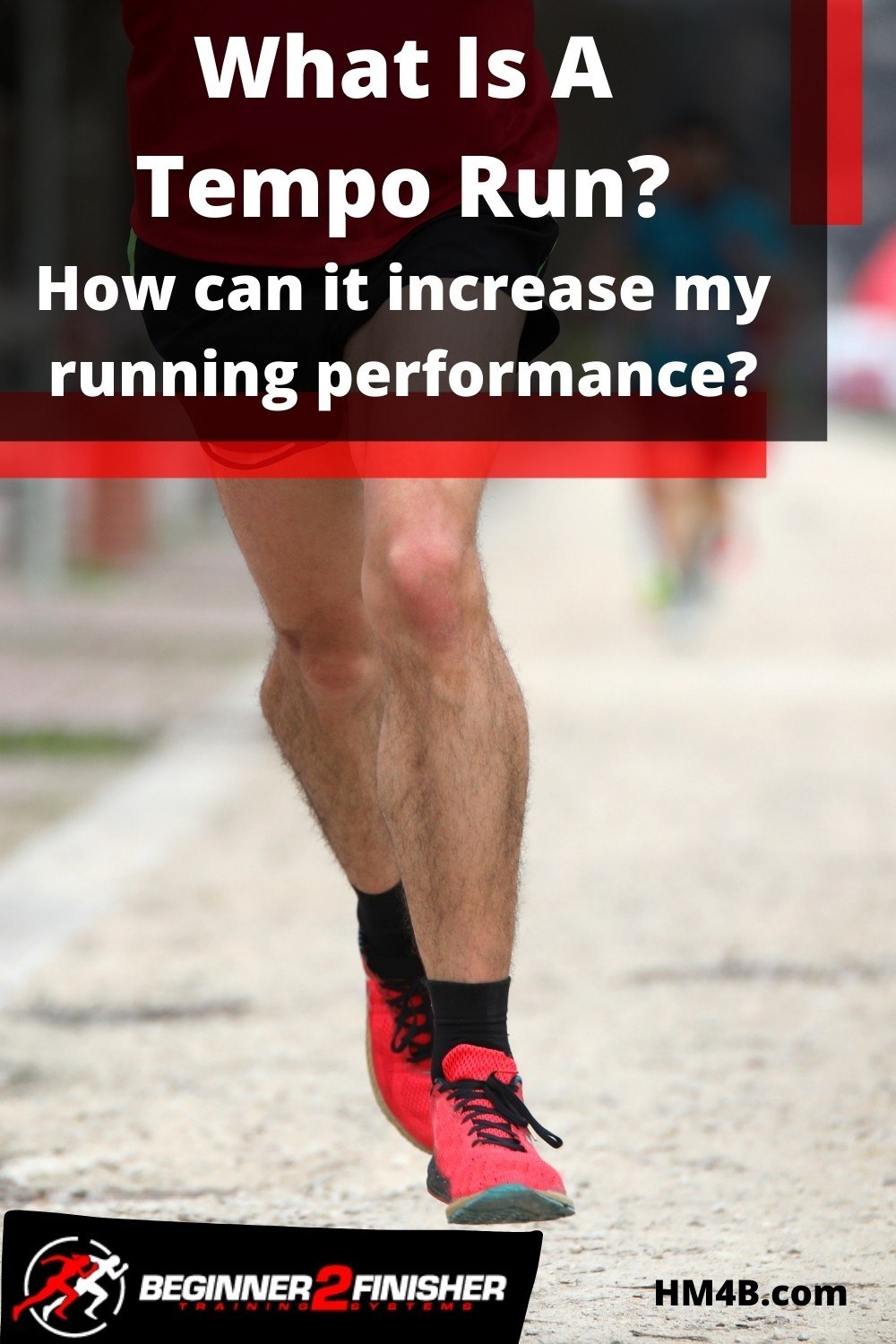All over the world today, runners are continually searching for innovative ways to train. Whether it’s to improve their stamina, endurance, or both, there is no shortage of training methods at your disposal. One such way is the ‘tempo run’, which is sometimes also known as the ‘threshold run’.
In this article, we’re going to explore everything you need to know about tempo runs. You’ll learn the how’s and why’s of this innovative training method while also developing an understanding of whether or not it’s for you.
Let’s get started.
What Is A Tempo Run?
Simply put, a tempo run is when you’re running at a challenging pace, one that you may rate as an 8 out of 10 of your maximum effort. You’ll hold this pace for anywhere from 15-30 minutes (typically 20 minutes) to push your lactic acid threshold, before slowing down to catch your breath.
This cycle is repeated as many times as the runner wants. The overall goal? To increase the runner’s stamina and endurance by pushing the limits of their lactic threshold.
Why Is It Called A Tempo Run?
The term ‘tempo run’ was made famous by Dr. Jack Daniels (Ph.D.), a running coach that wrote the book ‘Daniels’ Running Formula’. Other names for the tempo run include the ‘anaerobic threshold run’ or the ‘lactate-threshold run’; names that emphasize the tempo run’s technical aspects.
The name ‘tempo run’ refers to the changes in tempo throughout the training session. At first, you’ll increase your tempo to about 8 out of 10 of your maximum speed. You’ll then maintain that tempo for an extended period that can last anywhere from 15-30 minutes, also known as one ‘cycle’.
Between cycles, you’ll reduce your tempo to catch your breath and give your body time to recover before repeating the process for as many cycles as you want.
From a technical standpoint, each cycle’s goal is to push the limits of your lactic acid threshold, which will improve your endurance and stamina in the long-term.

How Often Should You Perform Tempo Runs?
You should only perform tempo runs once every week or two. Remember: tempo runs feature high-intensity intervals or ‘cycles’ where you’re running at about 80% of your maximum capacity.
Tempo runs offer plenty of benefits in terms of stamina and endurance, but still, there’s such a thing as doing too much of a good thing!
By saving it for only once a week or two, you’ll be able to reap the benefits of tempo runs while still giving your body plenty of recovery time. You’ll also ensure that your tempo runs do not interfere with other forms of run training you may be doing.
What Heart Rate Zone Should You Perform Tempo Runs In?
When you’re performing a tempo run, your heart rate should be in Zone 3 and Zone 4, or anywhere between 70-90% of your maximum heart rate. That should be followed by brief periods of lowering your tempo to Zone 1 and Zone 2 (50%-70% of your maximum heart rate) so that you can catch your breath and prepare for the next cycle.
To put all of those numbers into perspective here’s what heart rate zones typically look like:

What Are Tempo Runs Used For?
Tempo runs are typically used to improve mental endurance, speed and distance, and cardiovascular performance.
Do I need to include speed work for my first half marathon?
Mental Endurance
Tempo runs are a form of interval training consisting of high-intensity cycles followed by low-intensity recovery periods. Runners may find it mentally challenging to perform and repeat those cycles, especially when doing them back-to-back.
As a result, tempo runs provide runners with an opportunity to improve their mental endurance and determination.
Speed and Distance
Tempo runs are also called ‘threshold runs’ because of how they improve the body’s anaerobic threshold. In simple terms, tempo runs train the body to physically run faster and longer without getting tired as quickly.
Combine that with the added mental endurance, and tempo runs become a very potent tool for any runner’s training routine.
Related: Why Do I Feel Tired After I Run (besides exerting energy)?
Cardiovascular Performance
By running and sustaining cycles of high-intensity running, you also challenge the heart and lungs. The heart needs to pump plenty of blood and nutrients on short notice, while the lungs need to ensure that enough oxygen gets to where it’s needed the most.
As a result, the cardiovascular system becomes much more robust and more efficient overall.
What Pace Is A Tempo Run Supposed To Be Run At?
There are several ways to determine the ideal pace for a tempo run. One of the most straightforward methods to do that is to calculate your personal pace for a 5k run and lower it by about 30 seconds. So if your 5K pace is at 10:00 minutes/mile, your tempo run pace would be somewhere around 10:30 minutes/mile. For most average runners this will be close to your 10k race pace.
Alternatively, you can also base your tempo run based on whatever pace you can sustain for one hour without a break. That pace would be useful for running 20-30 minute cycles during your tempo run.
Remember: you should not be running at your maximum pace during a tempo run. The general idea is to run at only about 80% of your maximum pace during the cycle, before dropping down to a slower pace to catch your breath and recover between cycles.
Do Tempo Runs Make You Faster?
Yes, tempo runs are a fantastic way of training yourself to run faster. Tempo runs are sometimes called ‘threshold runs’ because of how they increase the body’s lactic thresholds. When that happens, runners are more capable of pushing their muscles to run faster without getting tired too quickly.
Besides that, tempo runs also help runners strengthen their mental endurance. As a result, runners can focus on achieving higher running speeds without being distracted by fatigue.
Bottom line: tempo runs help you run faster by improving both your physical and mental conditioning.
Benefits Of Using Tempo Runs During Marathon/Half Marathon Training?
Tempo runs are a very potent form of running training, primarily when used in a marathon or half-marathon training program. Here’s how tempo runs will benefit those types of training programs.
- Physical endurance: Marathons and half-marathons require a lot of physical endurance to cover the total running distance. Using tempo runs as part of the training program can prepare a runner to cover longer distances without experiencing muscle fatigue too quickly.
Runners will be able to sustain a faster pace with fewer breaks, resulting in an improved marathon or half-marathon finish time. - Mental endurance: One reason behind the popularity of marathons is the mental challenge that goes along with the physical. Make no mistake about it: you need mental endurance to complete a marathon, whether it’s full or half.
How do I increase my endurance for a marathon race?
Tempo runs offer a side benefit of training the runner’s mental endurance. That comes as a result of the repetitive low and high-intensity cycles.
- Cardiovascular conditioning: Another critical element of running a marathon is cardiovascular conditioning, i.e. how strong a runner’s lungs and heart can function. The interval nature of tempo runs conditions the heart and lungs to switch between lower and higher intensities with greater ease.
Are Tempo Runs Bad For You?
Tempo runs offer plenty of benefits to runners, but they also come with their fair share of risks. Typically, runners who haven’t done tempo running before end up pushing themselves too hard, too soon. As a result, they either injure themselves physically or burnout before they can reap any of the benefits.
How can you reduce these risks? Start with shorter cycles and at a slower pace. When you feel that you’re ready, you can gradually increase the intensity of your tempo runs.
Related: What Is Polarized Training? Is The Mid-Run Finally Gone?
Are Tempo Runs Better Than Interval Runs?
Tempo runs and interval runs are both fantastic tools for runners, but whether one is better than the other depends on the type of runner that’s using them. For example, tempo runs are much better for marathon runners, while interval runs are better-suited for sprinters.
Here’s why:
- Tempo runs alternate between comfortably high- and low-intensity runs, but never too high or too low. The goal is to increase the lactate threshold so that marathon runners can go longer distances more efficiently without fatigue preventing them from reaching the finish line.
- Interval runs consist of maximum effort runs, followed by lengthened recovery periods. Here, the goal is to train the body for short bursts of maximum power output, something better-suited to a sprinter preparing for a 100-meter dash or something similar.
So, to recap, whether tempo or interval runs are better than the other depends on the sport that you’re training for. Marathon runners and sprinters have different needs, so tempo runs are better suited to the former, and interval runs to the latter.
What Type Of Training Can I Substitute For A Tempo Run?
Runners have different capabilities and preferences. So, are there any other options that could substitute a tempo run? The answer is yes! One such example is the many different types of progression runs.
As the name suggests, progression runs involve a gradual increase in running intensity. For instance, you might want to increase your running intensity to a tempo-like pace, but only at the last third of the run.
Alternatively, you could also try a steady-paced progression run by dividing it into thirds. With this, you’ll spend a third running at your regular marathon pace, followed by another third at a higher tempo-like pace. You can then switch back to a slower pace as you complete the final part of that run.
These are just a few examples, but people tend to get very creative with their training as you may already know. Try out a few of these variations and see what works best for you!
What’s The Difference Between A Tempo Run And A Threshold Run?
A tempo run is one type of threshold training. In other words, there are several types of threshold training methods, and tempo runs are just one among them.
To put it in simple terms, a tempo run is done at a manageable pace. While the run’s intensity may be high, it’s not excessively so or necessarily trying to go past any limits.
Threshold runs, on the other hand, are aimed at pushing those very limits. The intensity level is meant to go beyond what the runner can comfortably manage, and as a result, help them to ‘raise the bar’ on their performance.
References
https://www.runnersworld.com/advanced/a20827239/what-is-a-tempo-run/
https://www.zwift.com/news/17138-what-is-a-tempo-run
https://www.healthline.com/health/tempo-run
https://www.milesplit.com/articles/219027/what-are-tempo-runs
https://www.inquirer.com/philly/blogs/on-the-run/Fartlek-tempo-intervals-Whats-the-difference.html
| Help support me and subscribe to my YouTube channel. YouTube video - 30 ways to make your runs less painful! Coach Scott's Credentials:
|
To sign up for a FREE half marathon training schedule, log sheet, and pace predictor CLICK HERE.

Recommended gear for runners
Connect with me:
| facebook.com/BeginnerToFinisher/ |



8 thoughts on “What Is A Tempo Run? How Can It Improve My Running?”